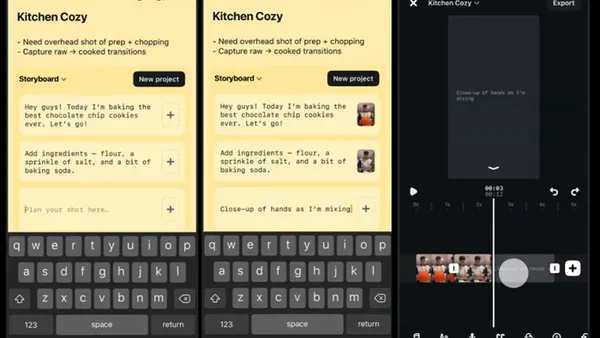The next level of news engagement has arrived.
Whereas Twitter and Facebook changed the media by shortening news into digestible chunks for anyone to share, one new company wants to create deeper, more immersive type of content experience that will surround us with the story: Condition One, a New York-based startup, is building an immersive video player that throws viewers directly into the moment of action with a 180-degree viewing experience.
Social media was the first step in the news revolution, taking control away from newsroom gatekeepers and placing it into the hands of influencers on Twitter and Facebook. Condition One also places control over the video experience into the hands of the viewer, literally, as Ipad users can swipe left or right to see what else is going on out of the frame of the moving scene.
CEO and Founder Danfung Dennis is trying to help viewers feel immersed in news stories so they can better empathize and understand war. Subsequently, the video technology aims to mirror the human field of vision, including blurry peripheral vision to make a scene feel more real. Just as Twitter provided an outlet for celebrities and politicians to connect personally with their audiences, Condition One establishes another connection--eliminating the barrier between real-life perception and the video screen.
Although similar to social media in trying to humanize content, Condition One veers away from other sites and apps in its approach. Social media has made consumer interactions with media shorter--the classic example of Twitter's 140 character limit delivers little more than a headline. However, It is often the case that a headline is the only thing people want to read. Subsequently many startups feel that they have to conquer the ever-shrinking attention span of social-media users by making products short and to the point. Condition One instead decided that to conquer a desensitized public attention span, they had to do the opposite--create an interactive and immersive video experience.
If this takes off, it could change the way people connect with the news--making them feel like they are in Libya hearing gunshots in the distance and turning to see rather than being a passive viewer of news coverage.
An article from Fast Company's Co.Design quotes Dennis's intent: "Through our work we hope to shake people from their indifference to war, and to bridge the disconnect between the realities on the ground and the public consciousness at home." Dennis is really speaking to a larger issue, that the effect of the increasingly active social media world is an increasing desensitization to shocking video content.
With an infinite number of ways in which people can experience a particular scene, the personal nature of each Condition One video will have to decrease passivity. Condition one is the answer to passive video consumption--it's the end of watching, posting then forgetting.
Keren Baruch is a rising senior at Barnard College studying Economics and Social History. She is currently working at a New York City-based tech startup, Grovo.com, an online Internet education and training platform with video tutorials to help people learn everything from how to use Facebook Timeline and Pinterest to Google Analytics training.
An article from


The Future of Video Content
Filed Under:
Content Marketing











